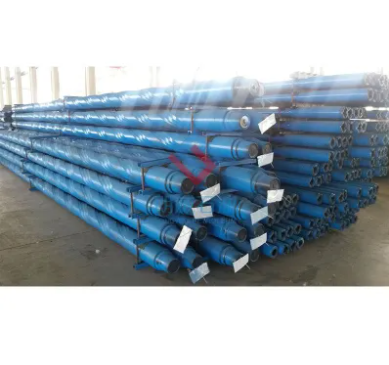What are the different types of drill collars?
Introduction
In the world of drilling, drill collars are crucial components that play a pivotal role in the drilling process. These heavy, thick-walled tubular tools are placed just above the drill bit in a drill string and provide weight and rigidity to the bottom-hole assembly. Drill collars assist in maintaining the verticality of the borehole, controlling drilling dynamics, and facilitating the transmission of torque and weight to the bit. To meet the varied demands of drilling operations, several types of drill collars are available, each designed for specific applications and challenges. In this article, we will explore the different types of drill collars and their respective uses.
What are the different types of drill collars?
Standard Drill Collars:
Description: Standard drill collars are the most common type and are typically made from carbon steel or non-magnetic steel. They are thick-walled and heavy, providing weight on bit (WOB) and preventing the drill string from buckling during drilling.
Applications: Standard drill collars are used in a wide range of drilling operations, from oil and gas exploration to geothermal drilling. They are suitable for relatively straightforward drilling conditions where high torque and WOB are required.
Spiral Drill Collars:
Description: Spiral drill collars have longitudinal spiral grooves machined into their outer surface. These grooves reduce the contact area between the drill collar and the borehole wall, decreasing the likelihood of differential sticking (when the drill string becomes stuck to the wellbore wall due to differential pressure).
Applications: Spiral drill collars are especially useful in drilling through formations prone to differential sticking, such as shale or clay. They help prevent the drill string from getting stuck by reducing contact friction.
Non-Magnetic Drill Collars:
Description: Non-magnetic drill collars are made from materials with low magnetic susceptibility, such as stainless steel or specialty alloys. These collars are designed to minimize magnetic interference with downhole measurement tools, including magnetic compasses and logging instruments.
Applications: Non-magnetic drill collars are crucial in drilling operations where accurate wellbore surveys and formation evaluation are essential. They are commonly used in geosteering applications and when drilling in magnetic or highly deviated wellbores.
Integral Blade Stabilizers (IBS):
Description: Integral blade stabilizers are drill collars with blades or fins machined into the outer surface. These blades help stabilize the drill string and control hole deviation by centralizing the drill bit in the borehole.
Applications: IBS collars are used when drilling through challenging formations that require precise directional control. They are particularly beneficial in directional drilling and horizontal drilling operations.
Flex Collars:
Description: Flex collars, also known as flexible or spiral-flex collars, feature a helical groove that runs along the length of the collar. This groove provides flexibility, allowing the collar to conform to the wellbore's curvature.
Applications: Flex collars are employed in drilling applications where the wellbore trajectory is highly curved or when drilling through formations with varying inclinations. They help maintain the desired wellpath and minimize drill string vibrations.
Slim Hole Drill Collars:
Description: Slim hole drill collars are designed with a smaller outer diameter compared to standard collars, making them suitable for narrower wellbores. They are typically made from high-strength steel to maintain their durability despite the reduced size.
Applications: Slim hole drill collars are used in drilling operations where the wellbore diameter is restricted, such as in geothermal drilling or when drilling pilot holes for larger wellbores.
Heavyweight Drill Collars:
Description: Heavyweight drill collars are standard collars with additional weight added by the inclusion of tungsten carbide inserts or other high-density materials in the collar's lower section. This extra weight enhances the WOB on the drill bit.
Applications: Heavyweight drill collars are used in situations where greater WOB is needed to overcome formation pressures or when drilling with high-density drilling fluids.
Magnetic Drill Collars:
Description: Magnetic drill collars are designed with enhanced magnetic properties to assist in locating the position of the drill bit and the bottom-hole assembly using magnetic measurement tools.
Applications: Magnetic drill collars are used when accurate positioning and depth control are critical, such as in geophysical logging or magnetic ranging applications.
Double Shouldered Drill Collars:
Description: Double shouldered drill collars have threaded connections at both ends, allowing for easy connection to other drill collars and drill string components.
Applications: These collars are versatile and are used in various drilling applications where flexibility in the drill string configuration is required.
Conclusion
Drill collars are indispensable components of drilling operations, providing stability, weight, and control to the drill string. The diversity of drill collar types reflects the wide range of drilling challenges and applications encountered in the industry. From standard drill collars that offer weight on bit and stability to specialized collars like non-magnetic collars for precise measurement tools or spiral collars for reduced sticking, each type serves a specific purpose in achieving drilling success. The choice of drill collar type depends on factors such as wellbore conditions, drilling objectives, and the need for directional control or magnetic measurements. As drilling technology continues to advance, so too will the design and capabilities of drill collars, enabling more efficient and effective drilling operations in various settings.
168
0
0



Comments
All Comments (0)